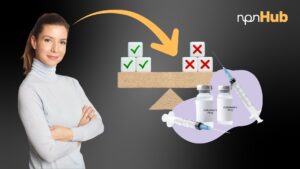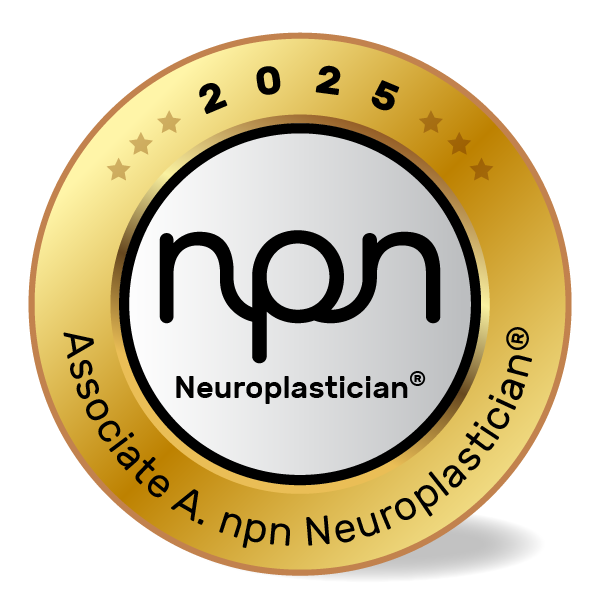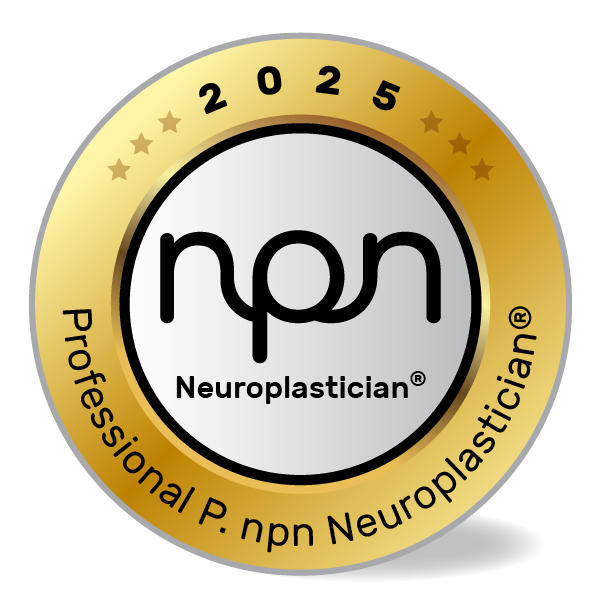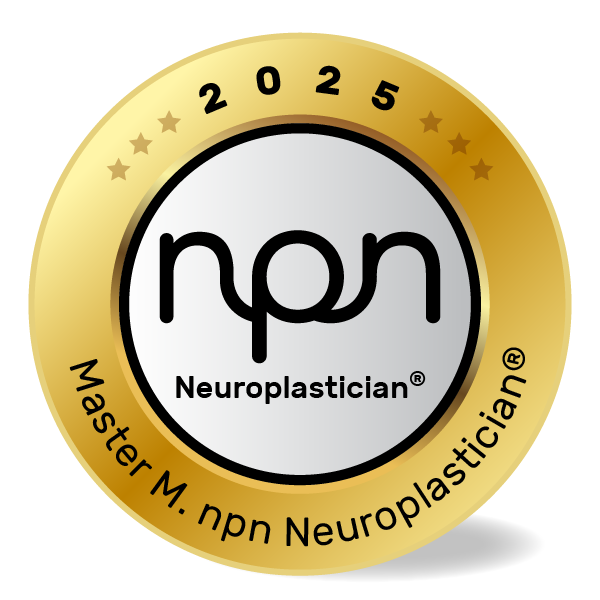How Brain-Based Practices Can Restore Balance, Focus, and Resilience
npnHub Editorial Member: Kim Goodwin curated this blog
Key Points
- Nervous system regulation is essential for cognitive health, emotional balance, and resilience during stress.
- The autonomic nervous system plays a central role in regulating responses to perceived threat.
- Stress dysregulation affects the prefrontal cortex, amygdala, and vagus nerve.
- Neuroscience-backed strategies like breathwork, grounding, and co-regulation can restore equilibrium.
- Practitioners can personalize interventions for clients based on neurobiological responses.
- Understanding neuroplasticity allows for lasting change through repeated, regulated behavior.
1. What is Nervous System Regulation?
Samantha, a well-being coach, noticed her client Mark, a high-performing executive, was frequently canceling sessions, reporting brain fog, and feeling emotionally “numb.” Instead of pushing for cognitive goals, Samantha shifted her focus to nervous system regulation. Within weeks of applying grounding and co-regulation techniques, Mark’s clarity, motivation, and presence returned.
This story is illustrative – it captures how nervous system dysregulation often goes unnoticed in high-functioning clients, yet silently erodes their capacity to engage and grow.
Nervous system regulation refers to the body’s ability to maintain a state of balance, shifting between arousal and rest states as needed. When we’re overwhelmed, our autonomic nervous system (ANS) – particularly the sympathetic and parasympathetic branches – can become stuck in hyperarousal or hypoarousal. Research from Stephen Porges’ Polyvagal Theory emphasizes the importance of vagal tone in managing these shifts Porges, 2007. Supporting clients in understanding and working with their nervous system can help restore this balance, especially during stressful times.
2. The Neuroscience of Nervous System Regulation
During a mindfulness workshop, a neuroplastician observed that one group of educators responded to breathwork with deep relaxation, while another group found it activating. By mapping their responses to vagal tone and heart rate variability (HRV), she realized that regulation must begin with awareness of individual nervous system states.
This illustrative example highlights the complexity of nervous system responses – and the need for personalized neuroscience-informed tools.
At the neural level, the prefrontal cortex (executive function) downregulates the amygdala (threat detection) during safe, regulated states. However, during chronic stress, the amygdala hijacks attention and memory, reducing access to rational thought. The vagus nerve, a key part of the parasympathetic system, modulates heart rate, digestion, and social engagement. According to Dr. Ruth Lanius, chronic stress or trauma can impair connectivity between the medial prefrontal cortex and limbic regions, disrupting regulation Lanius et al., 2010.
Effective nervous system regulation depends on restoring this network’s integrity. Brain-body practices that enhance vagal tone and cortical-limbic communication offer powerful interventions during stress.
3. What Neuroscience Practitioners, Neuroplasticians, and Well-being Professionals Should Know About Nervous System Regulation
In a coaching session, an educator reported feeling overwhelmed with decision fatigue and irritability. Her practitioner asked about sleep, food, and social connection – not her productivity. It turned out her dysregulation stemmed from chronic sympathetic activation. Grounding, rhythm, and gentle co-regulation became the foundation of her recovery.
This illustrative case reminds us that performance issues often stem from nervous system dysregulation, not mindset problems.
Professionals must be aware that:
- High-functioning individuals often mask dysregulation, making it harder to detect.
- Misinterpreting stress behavior as “resistance” can lead to ineffective interventions.
- Common myths include:
- “Calming down” always works – yet some clients need activation instead.
- Regulation is only about emotions – not true; it’s physiological first.
- Mindset alone can override stress – not when the nervous system is stuck.
- “Calming down” always works – yet some clients need activation instead.
Frequently asked questions:
- How do I know if a client is in sympathetic or dorsal vagal dominance?
- What’s the best first step for a hyper-aroused vs. hypo-aroused client?
- Can clients build self-regulation without co-regulation first?
Research from the Harvard Stress & Development Lab supports that safety, predictability, and rhythm are vital for regulation and neurodevelopment.
4. How Nervous System Regulation Affects Neuroplasticity
Repeated experiences shape the brain – and chronic dysregulation trains the nervous system to expect danger, even in safe environments. When stress becomes habitual, neural pathways reinforce vigilance, reactivity, and withdrawal.
Fortunately, the brain is plastic. Regulation practices like paced breathing, mindful movement, and social connection create predictable, safe experiences that strengthen pathways associated with calm, resilience, and trust. Over time, this rewires the brain to expect and create safety.
Research by Dr. Bruce Perry shows that rhythmic, relational, and relevant interventions reorganize the stress-damaged brain through what he calls “patterned repetitive activities” Perry & Szalavitz, 2006. This is especially important for neurodivergent clients, whose regulation systems may differ but remain highly adaptable through experience.
5. Neuroscience-Backed Interventions to Improve Nervous System Regulation
Why Behavioral Interventions Matter
Stress dysregulation undermines learning, decision-making, and emotional resilience. Practitioners must support clients in training the nervous system to shift from threat to safety through accessible, science-based practices. One neuroplastician working with frontline educators found that nervous system tools, more than productivity hacks, helped her clients sustainably re-engage with their work.
1. Paced Breathing to Activate the Vagus Nerve
Concept: Slow, rhythmic breathing (especially 6 breaths per minute) increases vagal tone, reducing sympathetic activation Jerath et al., 2006.
Example: A coach guides a client through daily 5-minute breathing practices before high-stress meetings.
✅ Intervention:
- Use a timer or breath app set to 5-second inhale, 5-second exhale.
- Begin sessions with 2 minutes of breathing together.
- Encourage clients to practice before sleep and before transitions.
2. Movement-Based Grounding
Concept: Rhythmic movement activates proprioceptive pathways and calms the brainstem (Perry & Szalavitz, 2006).
Example: An educator introduces 3-minute movement breaks between cognitive tasks to reset the nervous system.
✅ Intervention:
- Use walking, swaying, or gentle rocking.
- Encourage daily micro-movement rituals.
- Pair movement with music to deepen regulation.
3. Co-Regulation Before Self-Regulation
Concept: Safe human connection downregulates limbic reactivity through mirror neuron systems and oxytocin release Schore, 2012.
Example: A practitioner maintains attuned eye contact and warm tone during emotionally charged sessions, modeling calm.
✅ Intervention:
- Begin with presence and attunement, not problem-solving.
- Create rituals of safety at session openings (e.g., check-ins, shared breathing).
- Use language that reflects the client’s pace and state.
4. Sensory Anchors for State Shifting
Concept: Targeted sensory input (e.g., touch, scent, temperature) can trigger a parasympathetic shift via the insula and thalamus Craig, 2009.
Example: A neurocoach gives clients “anchor kits” with calming textures, essential oils, and weighted tools.
✅ Intervention:
- Identify preferred sensory anchors (cool water, essential oil, soft cloth).
- Encourage use before stress spikes (e.g., before public speaking).
- Integrate into daily routines to build neural associations.
5. Naming the State to Normalize the Response
Concept: Labeling emotional and physical states activates the medial prefrontal cortex and reduces limbic load Lieberman et al., 2007.
Example: A coach trains clients to say, “My nervous system feels activated,” instead of “I’m anxious.”
✅ Intervention:
- Teach a “states map” (sympathetic, parasympathetic, freeze).
- Use metaphor (“traffic lights,” “weather report”) to reduce shame.
- Reflect and validate client observations during sessions.
A Practical Roadmap for Practitioners: From Insight to Action
Understanding these neuroscience insights is empowering – but implementation can feel overwhelming. Here’s a simplified, practitioner-friendly roadmap to integrate nervous system regulation strategies effectively.
Step 1: Begin with Self-Regulation for You
Start each session with a couple of minutes of your own paced breathing. Develop a habit of checking in with your nervous system throughout the day. Use grounding tools such as a soothing scent, textured object, or movement to stay regulated.
Step 2: Observe and Name the Client’s State
Tune into the client’s presentation. If they are agitated, restless, or over-explaining, they may be in hyperarousal. If they appear shut down or flat, they may be in hypoarousal. Help clients explore their state using accessible metaphors like traffic lights or weather systems.
Step 3: Establish Co-Regulation First Rather than diving straight into problem-solving, begin with connection. A consistent check-in ritual or shared moment of breath can create a foundation of safety. Match their tone and pace to model attunement and regulate together.
Step 4: Introduce One Practice at a Time Choose a simple practice based on your client’s current nervous system needs. For example:
- Use 5-in/5-out breathing when the system is hyperactivated.
- Invite slow, rhythmic movement for grounding.
- Suggest a sensory item like a soft cloth or essential oil as a calming anchor.
- Encourage the client to label their state: “My nervous system feels alert,” rather than “I’m anxious.” Keep each new strategy small, consistent, and repeatable over time.
Step 5: Reflect and Adapt At follow-ups, ask: What worked? What didn’t? Adjust based on the client’s feedback. Remember that self-regulation builds over time and personalization is key.
Optional 4-Session Protocol If you’re introducing nervous system work to a client, you might follow this structure:
- Session 1: Build awareness and introduce co-regulation via breath.
- Session 2: Map states and introduce the idea of naming nervous system shifts.
- Session 3: Add movement-based grounding or rhythm-based activity.
- Session 4: Introduce calming sensory tools and reflection practices.
This gradual layering ensures safety, engagement, and long-term integration.
6. Key Takeaways
When the nervous system is dysregulated, the whole person suffers – cognition, emotion, and connection. But the good news? Regulation is learnable. The brain and body can relearn calm, safety, and engagement through repeated, intentional experience.
Nervous system regulation is not a side note – it’s foundational. For practitioners, it’s a powerful gateway to unlocking transformation in even the most stressed clients.
🔹 Dysregulation impacts executive function, emotional balance, and social connection.
🔹 The vagus nerve and prefrontal cortex are key to restoring balance.
🔹 Regulation is built through repeated, safe, and sensory-informed experience.
🔹 Science-backed strategies like paced breathing, co-regulation, and grounding work across neurotypes.
🔹 Every brain can be rewired for safety and resilience.
7. References
- Porges, S. (2007). The Polyvagal Perspective. Biological Psychology.https://pubmed.ncbi.nlm.nih.gov/17049418/
- Lanius, R. et al. (2010). The Emerging Neurobiology of Dissociation: Implications for Treatment. Journal of Trauma & Dissociation.https://pmc.ncbi.nlm.nih.gov/articles/PMC4439425/
- Perry, B. & Szalavitz, M. (2006). The Boy Who Was Raised as a Dog. Basic Books.
- Jerath, R., Edry, J. W., Barnes, V. A., & Jerath, V. (2006). Physiology of long pranayamic breathing. Medical Hypotheses.https://pubmed.ncbi.nlm.nih.gov/16624497/
- Craig, A. D. (2009). How do you feel—now? The anterior insula and human awareness. Nature Reviews Neuroscience.https://www.nature.com/articles/nrn2555
- Lieberman, M. D. et al. (2007). Putting feelings into words: affect labeling disrupts amygdala activity. Psychological Science.https://pubmed.ncbi.nlm.nih.gov/17576282/















